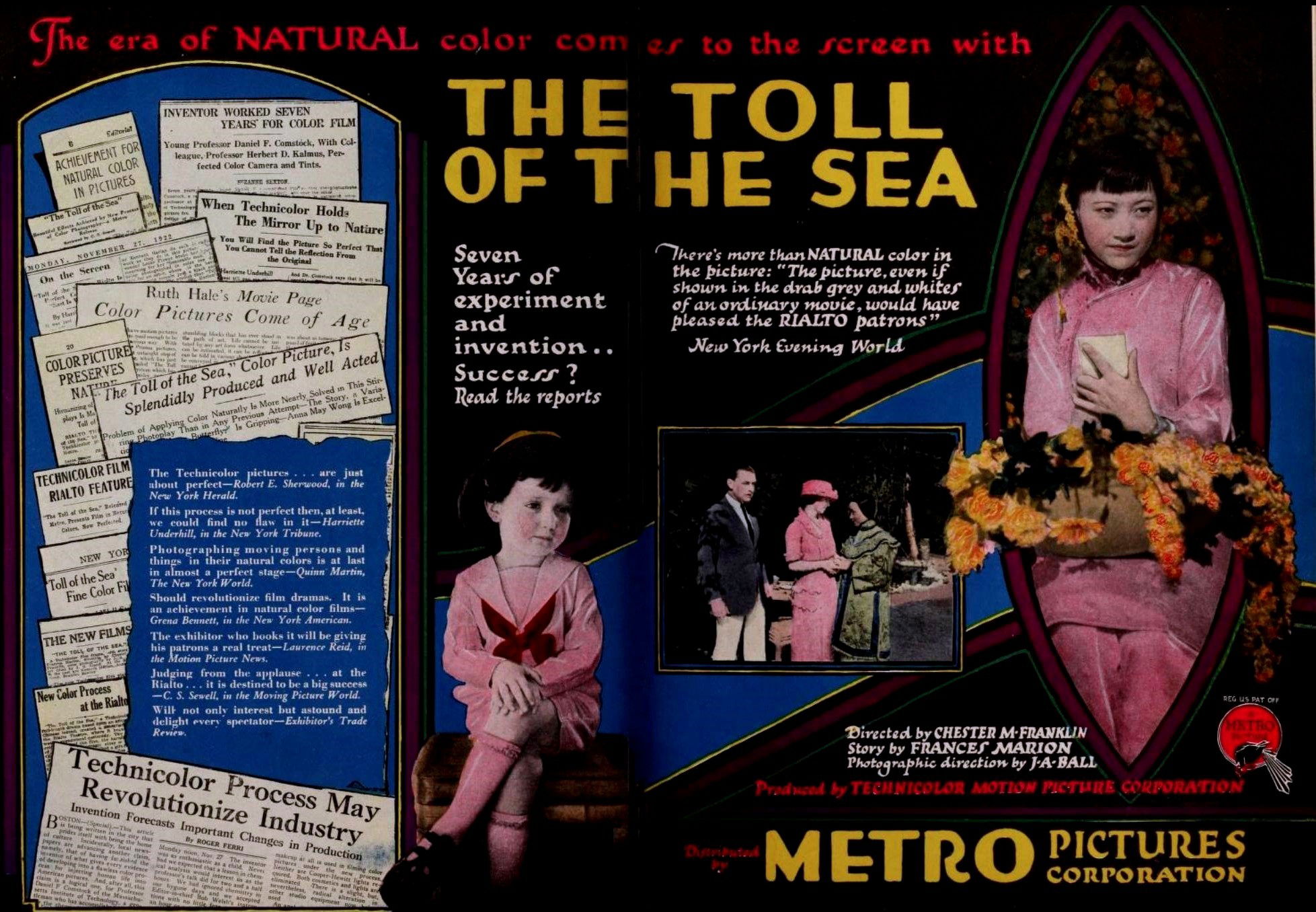ANNA MAY WONG “The Art of Being Anna May Wong"
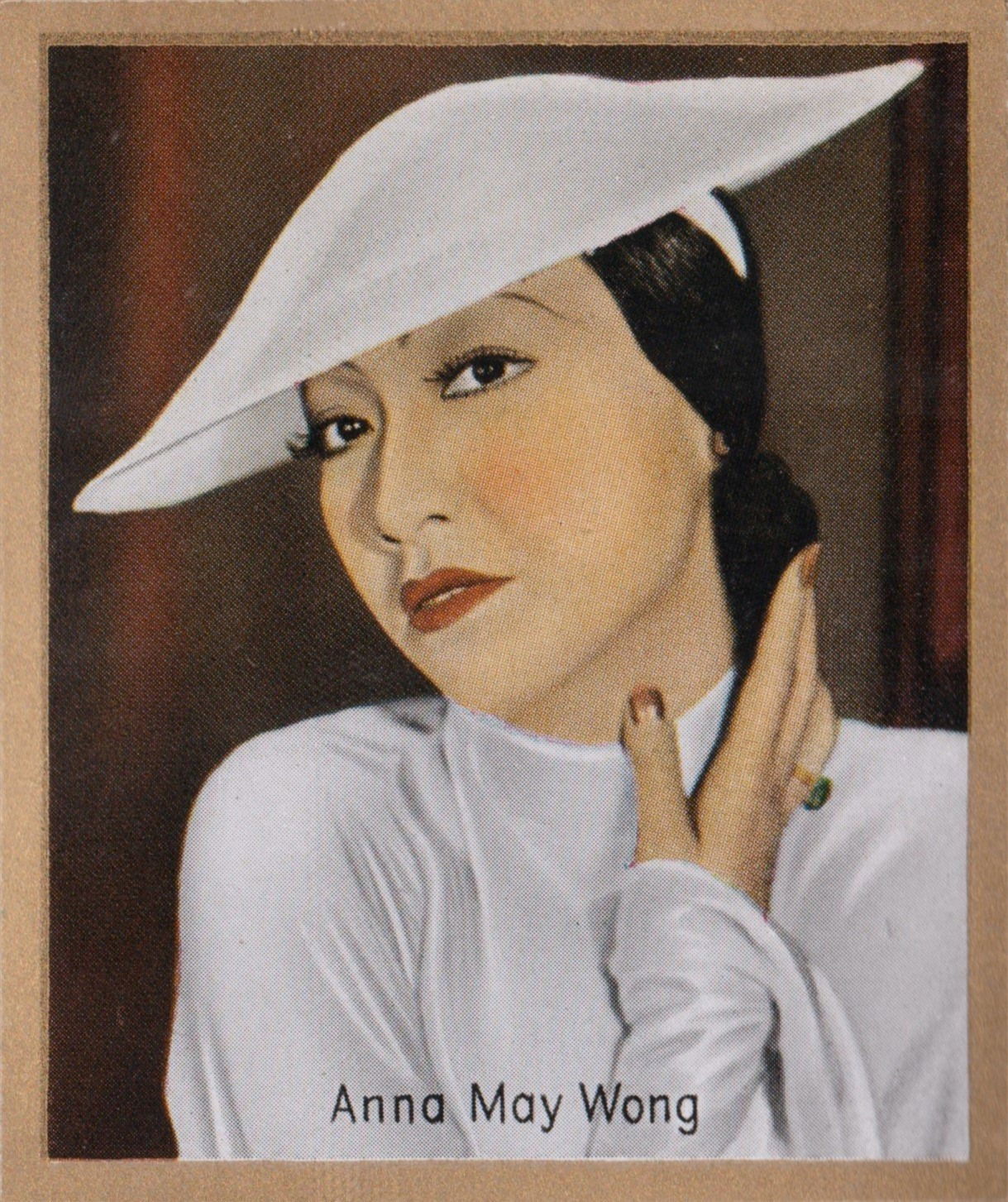
Card n.3 pag. 24 COLORFUL MOVIE PICTURES ALBUM 7
(personal collection)

A LIFE OF SUCCESS AND CHALLENGE
GERMAN POSTCARD ROSS VERLAG n° 3433/1
(personal collection)
"The Beginning of an Eclectic Journey"

Anna May Wong con la sorella Mary
Card position 1pag. 17 RAMSES FILM BILDER ALBUM 1
(personal collection)

The second child of the 8 children of Lee Gon Toy and Wong Sam Sing, Californians of Chinese origin who owned a laundry, Anna May Wong was born near Chinatown, a famous neighborhood of Los Angeles. From a young age, she became passionate about cinema and decided that she would become an actress. His first role was as an extra in the film The Red Lantern (1919). During the silent film era, he starred in The Toll of the Sea (1922), one of the very first films made in color, and in The Thief of Baghdad (1924) with Douglas Fairbanks. It was during this period that Wong became a style icon and achieved international fame.

Cards 2 e 3 pag.25 SALEM GOLD-FILM-PICTURES ALBUM 2
(personal collection)
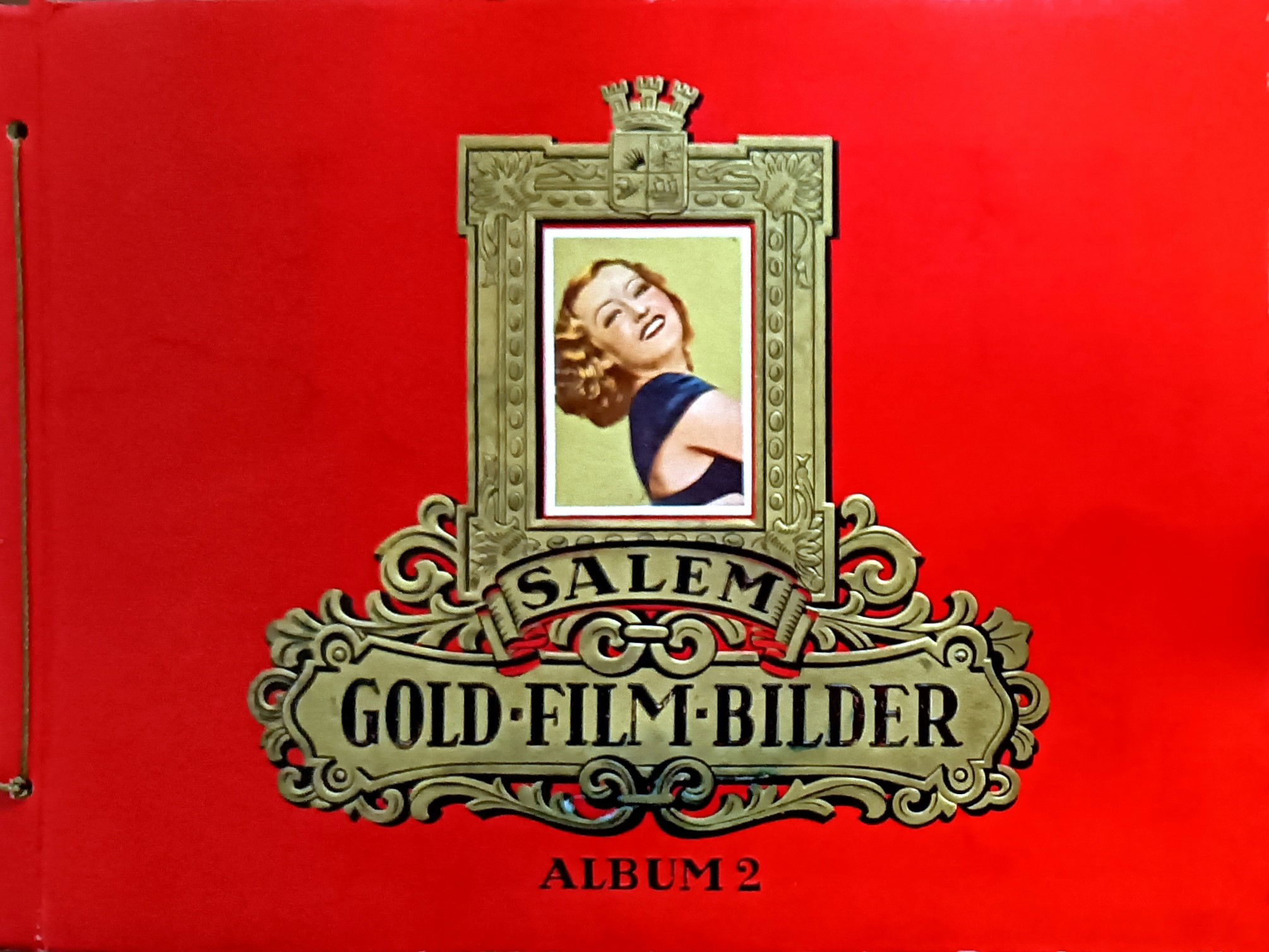
The Challenges of Success

Card n.115 THE ORAMI ALBUM
(personal collection)
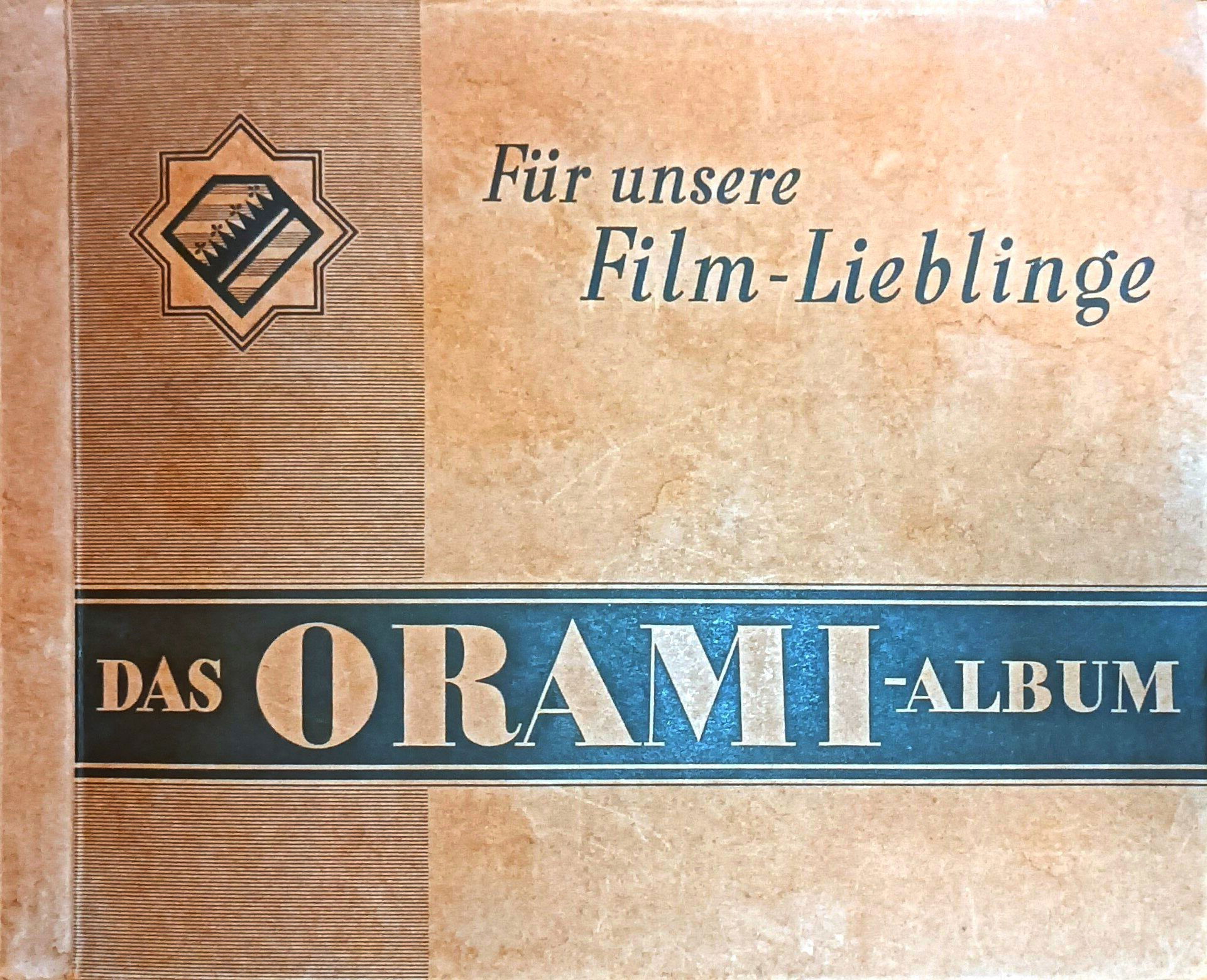
Anna May Wong faced numerous challenges due to the ethnic discrimination prevalent in the film industry at the time. Wong often found herself relegated to stereotypical roles that exoticized her Asian heritage. Despite her talent and popularity, Hollywood was reluctant to offer her leading roles, preferring white actresses to play Asian characters instead. This practice, known as "yellowface," was common at the time and reflected racist laws that prohibited intimate scenes between actors of different ethnicities. Wong, however, did not limit herself to passively suffering these injustices; he left Hollywood for Europe, where he received great appreciation and played leading roles in several British films. Upon her return to the United States, she was promised better roles, but continued to find herself having to play stereotypical characters. Despite this, he has used his fame to support Chinese-American causes and to promote fairer film roles for Asian actors. His fight against Hollywood stereotypes and his commitment to humanizing Chinese roles have left a lasting legacy, influencing future generations of actors and activists in the fight for fairer and more accurate representation in film.

"Courtesy of the Media History Digital Library"
Page 24 of the periodical PICTURE PLAY MAGAZINE (1932)
Actress Anna May Wong, despite her popularity and success, avoids romance. Being of Eastern descent in the Western world, she faced hardship and sacrificed friendships for fear of hurting herself or others. Anna May believes that only a marriage based on intellectual companionship can bring true happiness. However, her independence could be compromised in a marriage. At twenty-four, Anna May is an international celebrity, with a meditative presence that captivates men. Her plastic grace and character-shaping ability make her intriguing. Despite the exotic nuances, it is both centuries ago and today, with a mix of Eastern and Western culture. His soul is like a lonely lotus, whispering secrets in his ivory skin and dark eyes.
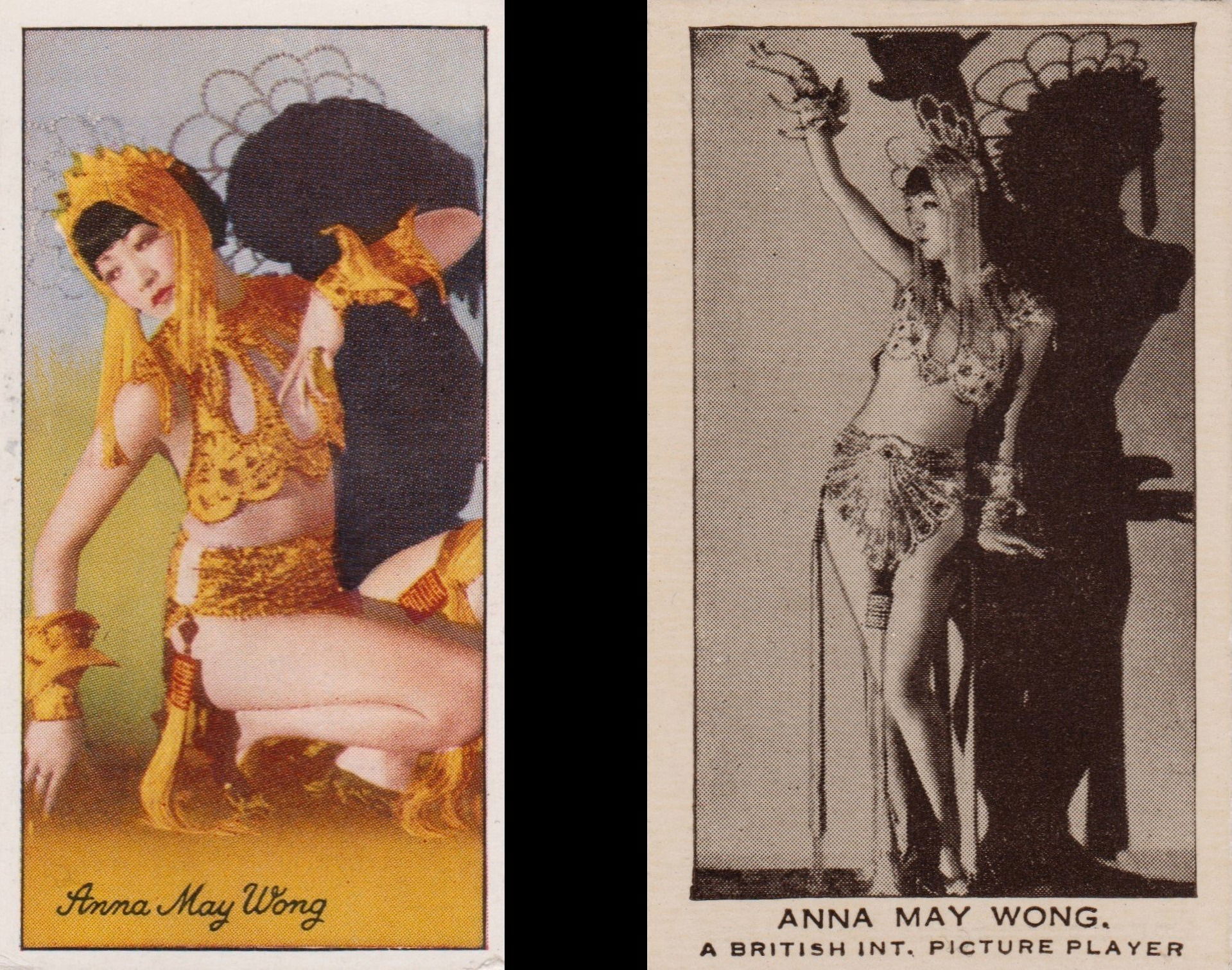
SX - Card n.7 of the FAMOUS FILM STARS series
LTD RACING (1935)
DX - Card unnumbered position 23 PROMINENT SCREEN FAVOURITES (1934)
ROTHMANS LTD
(personal collection)
The European Experience and the Return to Hollywood
Card n.4 Pag.31 JOSETTI FILM ALBUM N.2
Scene from the movie "SHANGHAI EXPRESS"
(personal collection)
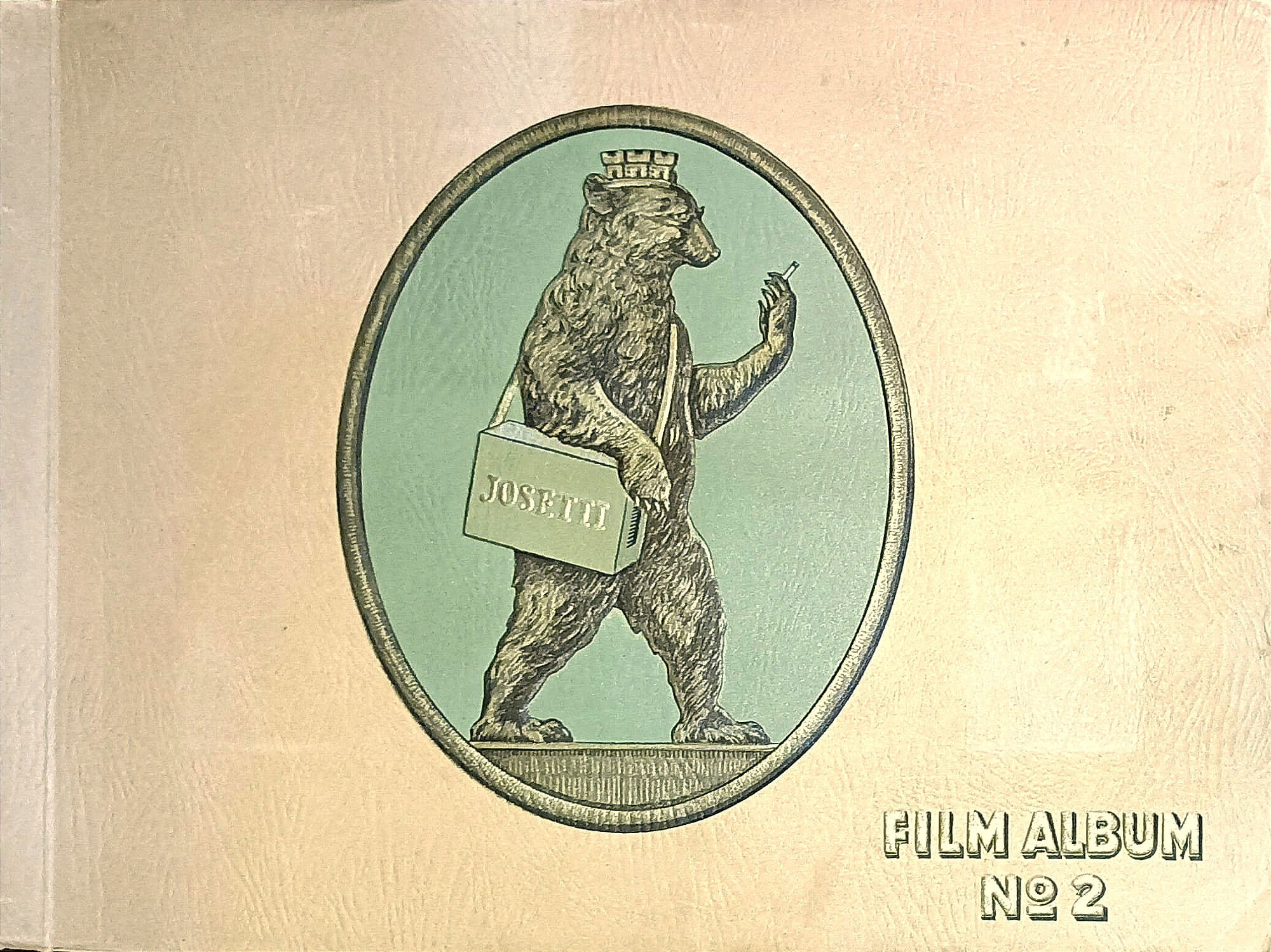
Anna May Wong, an icon of American cinema, is the first Chinese-American Hollywood star who has had a distinctive European career. After leaving Hollywood due to the stereotypical roles she was offered, Wong moved to Europe in 1928, where her career took a significant turn. In Europe, Wong starred in several notable films, including 1929's "Piccadilly," a British film that allowed her to showcase her talent in a complex and multifaceted role. He also worked with Marlene Dietrich in the 1932 film "Shanghai Express", which became one of his most celebrated roles. During her time in Europe, Wong participated in a variety of productions in English, French, and German, demonstrating her versatility as an actress. His European experience not only expanded his artistic repertoire, but also helped to challenge racial barriers in the cinema of the time.
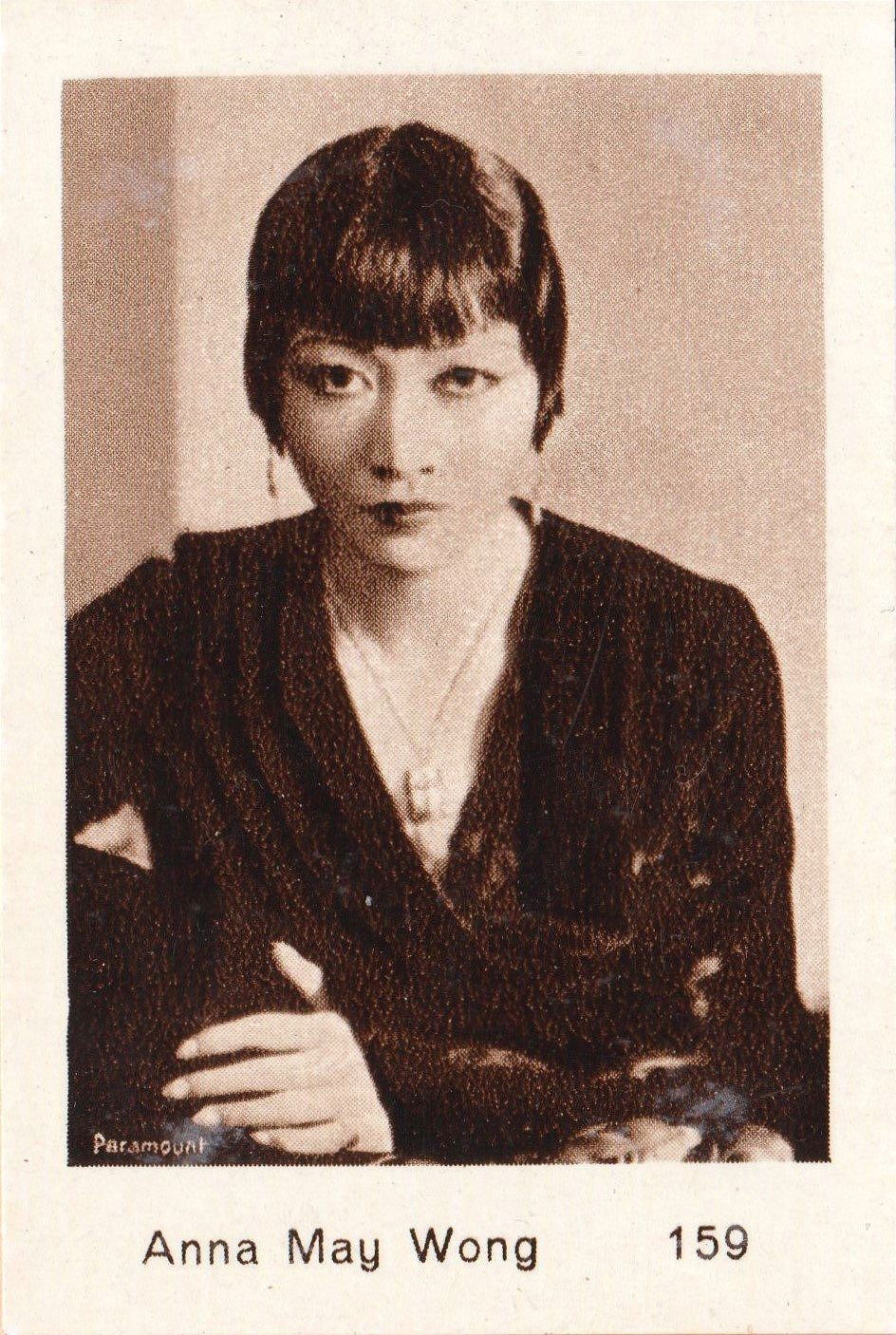
Card n.159 dell'Album MONOPOLY FILM-PICTURES
(personal collection)

Anna May Wong was a pioneer who paved the way for future generations of Asian-American actors and left a lasting legacy in the film business. Despite promises of leading roles upon her return to the United States in the 1930s, she often found herself relegated to playing Asian stereotypes. Although he got important roles, his compensation was not as high as that of other actors who appeared even a few minutes on screen. In 1935, Metro-Goldwyn-Mayer refused to consider her for the lead role in The Good Earth, based on the novel of the same name by Pearl S. Buck. In her place, they chose the German actress Luise Rainer, who will be awarded with the Oscar. This disappointment was one of the biggest of his career. However, he used his fame to support Chinese-American causes and to improve opportunities for film roles for Asian actors.

Card n.23 della serie LOVE SCENES from FAMOUS FILMS
J. WIX & SONS LTD (1932)
Scene from the movie "PICCADILLY"
(personal collection)
"Piccadilly" is considered a classic of British cinema and an important example of Anna May Wong's work. The film was initially released as a silent film in February 1929, but then, due to the scarcity of audiences, it was re-released with a soundtrack and sound effects in June of the same year, to adapt to the growing popularity of sound films. The sound version also included a five-minute sound prologue added to the beginning of the film.

"Courtesy of the Media History Digital Library"
Pag. 42 del periodico THE NEW MOVIE MAGAZINE (JAN-JUN 1932)

Card n.8 della serie PORTRAITS OF FAMOUS STARS
GALLAHER LTD (1935)
(personal collection)
Anna May Wong played the role of Zahrat Al-Kulub in the 1934 film Chu Chin Chow. This film adaptation is based on the hit play Chu Chin Chow by Oscar Asche and Frederick Norton. The film was shot at Gainsborough Pictures' Islington Studios in London. Critics received Chu Chin Chow positively. The New York Times wrote: "This morning's news should be 'The Redcoats are coming!' Britain's long-heralded invasion of the American film market began with the offer to the Roxy of Chu Chin Chow, a melodious, spectacular and robust adaptation of Oscar Asche's comic operetta.
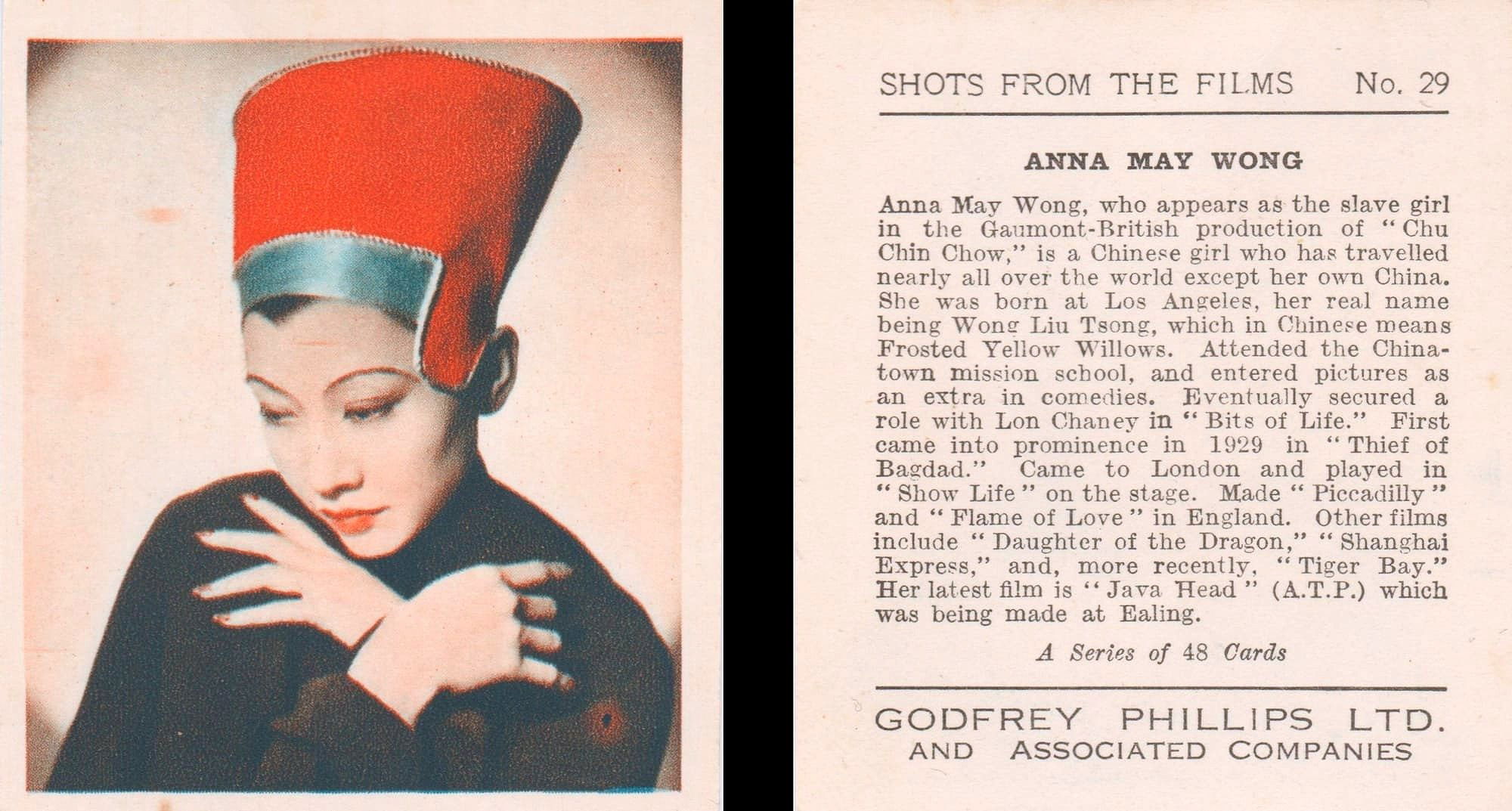
Card n.29 della serie SHOTS FROM THE FILMS
GODFREY PHILLIPS LTD (1934)
(personal collection)
A Commitment to the Chinese Cause

Card n.3 Pag.20 HEN FILM IMAGES TONE FILM SERIES
(personal collection)
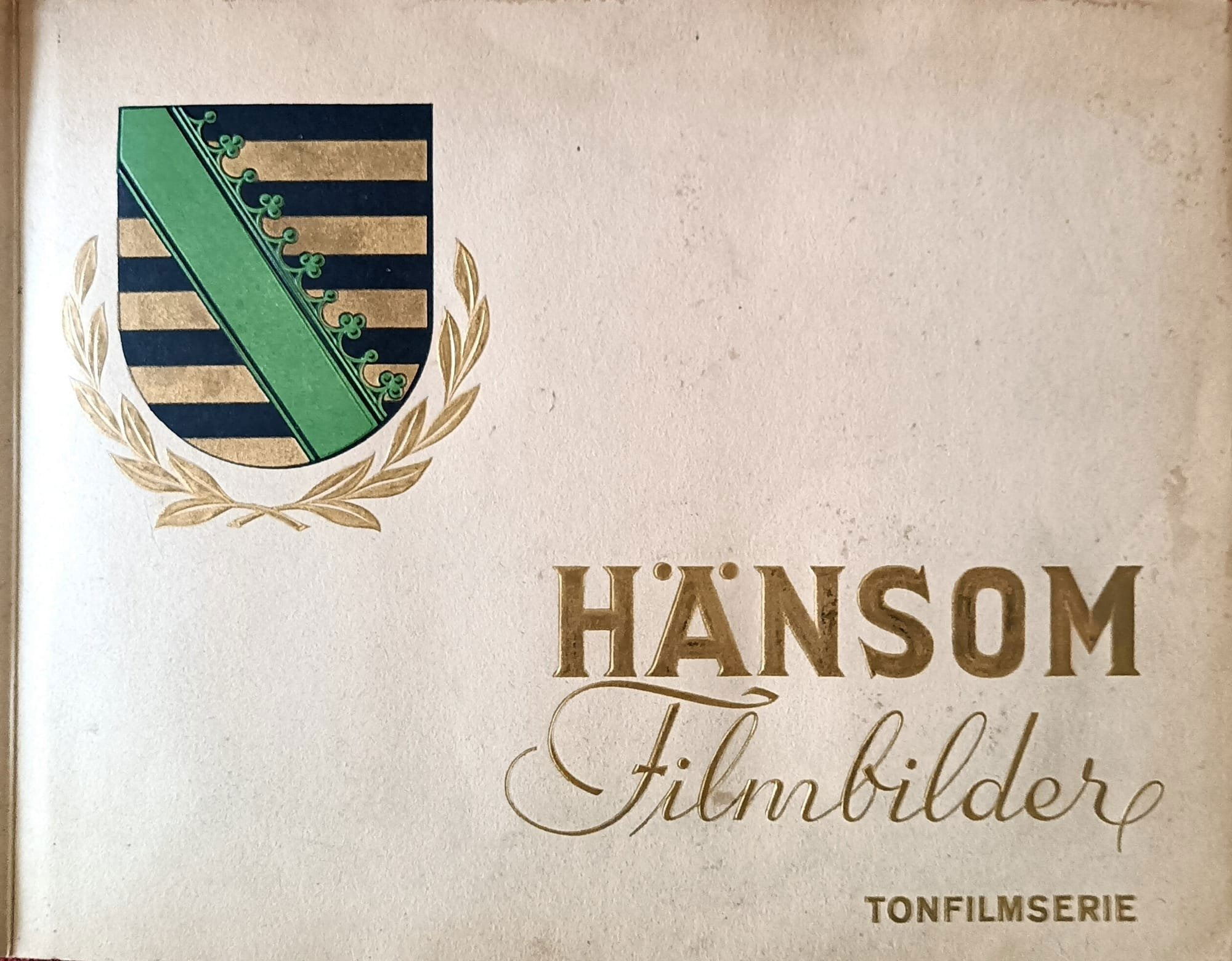
During World War II, Wong distinguished herself for her commitment to the Chinese cause, supporting war efforts against the Japanese invasion. He used his influence and resources to raise funds and raise awareness about the situation in China. His work was not limited to financial support; He has also participated in events, given speeches, and used his visibility to shine a light on the injustices suffered by his home country.
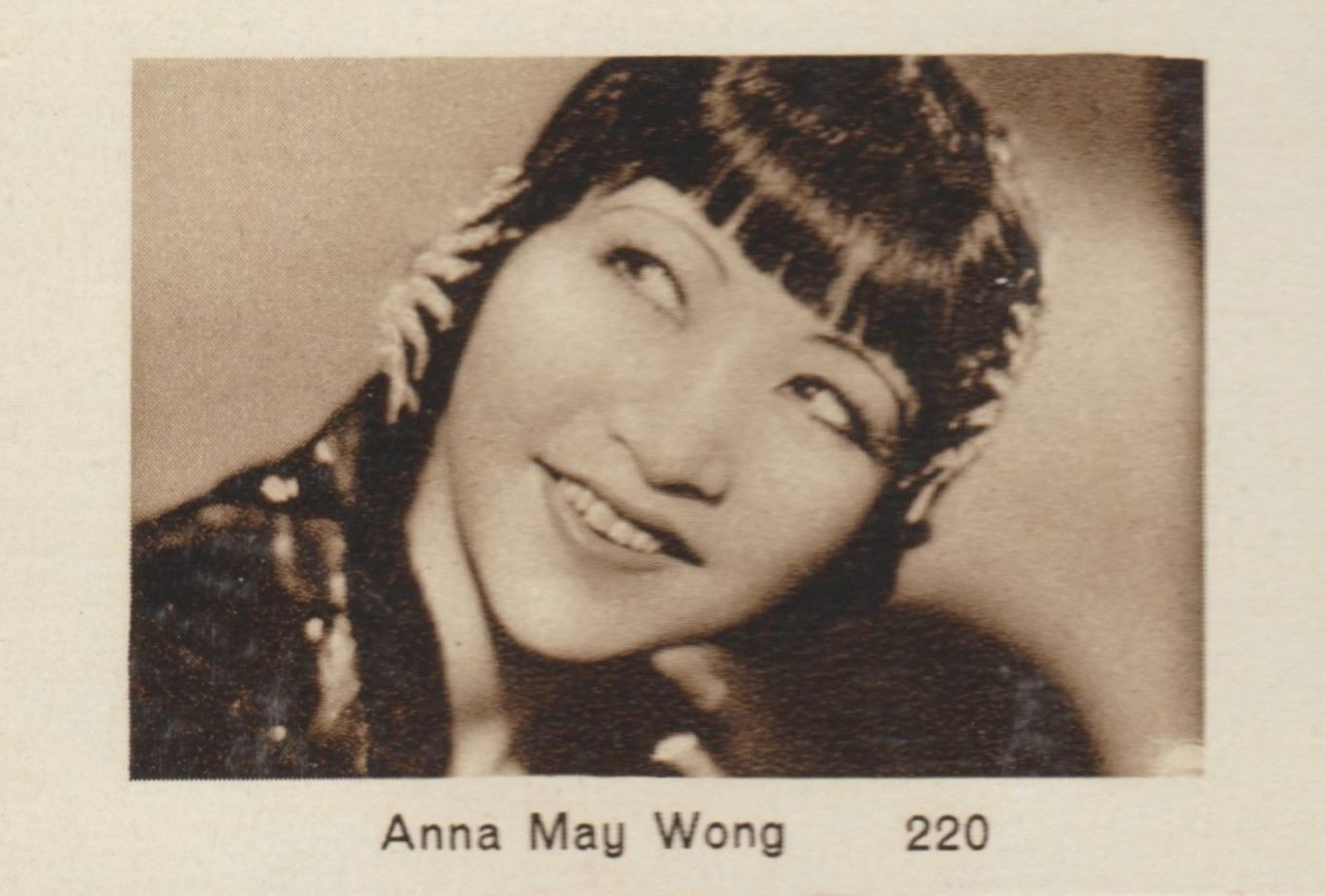
Card n.220 dell'Album MONOPOLY FILM-PICTURES
(personal collection)

With the end of the conflict and the advent of the Cold War, Wong continued to work in the entertainment industry, but with reduced visibility due to the political climate and persistent racial barriers. However, in 1951, she made history with "The Gallery of Madame Liu-Tsong," a television series in which she played the protagonist, a Chinese-American detective. This role marked a significant moment in the representation of ethnic minorities on television, offering a more nuanced and complex picture than the prevailing stereotypes of the time.
Inheritance and Revaluation

Card n.4 Pag.6 BULGARIA-GOLD-FILM-BILDER
(personal collection)

After an appearance in the film Portrait in Black (1960), Wong intended to return to the cinema with Lotus Flower, but died of a heart attack in 1961, at the age of fifty-six. For decades after her death, Anna May Wong was remembered mainly for the stereotypical characters related to her ethnicity. However, her legacy has been re-evaluated over the years, and today she is considered an important figure in the history of cinema and in the fight for minority representation.
ANNA MAY e le "CIGARETTE CARDS"

Cards position 1 and 2 Pag.7 JOSETTI ALBUM n°2
(personal collection)

The intersection between cigarette card advertising and the figure of Anna May Wong proves to be a fascinating study of how marketing and cinema intertwine to create cultural icons. In Hollywood's heyday, cigarette cards served as promotional tools, not only for tobacco products, but also for movie stars, including Anna May Wong, the first Asian-born actress to conquer Hollywood. These cards, which were collected and traded fervently by fans, helped cement the public image of celebrities, influencing public perception and amplifying their fame.

Card n.1 della serie FILMS FAVOURITES
GODFREY PHILLIPS LTD (1934)
(personal collection)
Anna May Wong, with her exotic elegance and undisputed talent, was an ideal subject for these advertising campaigns. His representations on cigarette cards were not simple portraits; were full of meanings and symbolism. Often, these images portrayed her in suggestive poses or in costumes that evoked her cultural heritage, helping to build an aura of mystery and fascination around her person. However, these same images mirrored and, in some cases, perpetuated the racial stereotypes of the time, reducing the complexity of a figure like Wong to mere exotic clichés.
Despite this, Anna May Wong used her visibility to challenge these stereotypes. Through his professional choices and public presence, he worked to humanize Asian roles and promote fairer and more accurate representation in film. Cigarette cards, therefore, became a sort of double thread: on the one hand, they strengthened her fame and made her a recognizable icon; on the other, they reflected the limitations imposed by society and the film industry of the time.
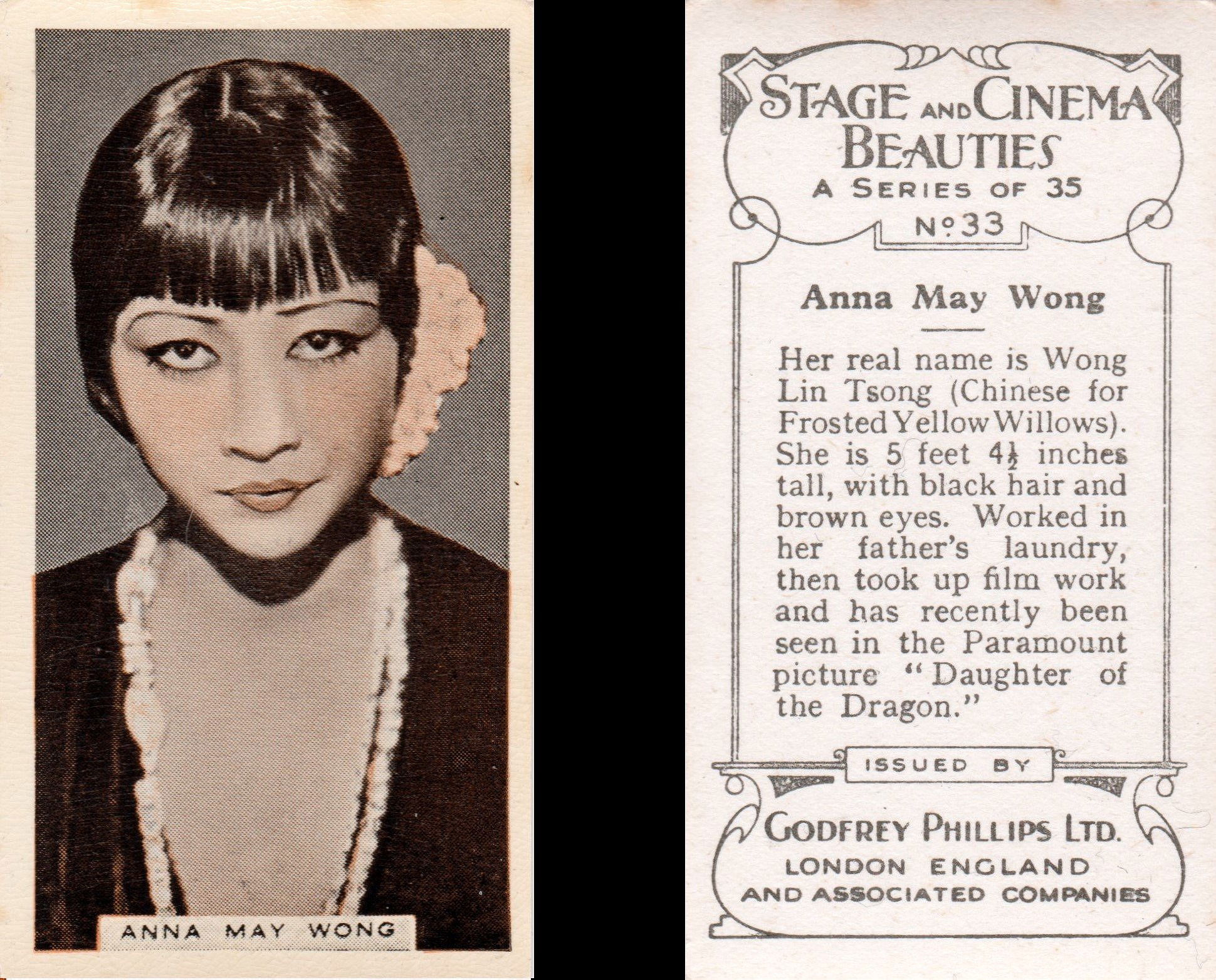
Card n.33 della serie STAGE and CINEMA BEAUTIES
GODFREY PHILLIPS LTD (1933)
(personal collection)
The correlation between cigarette cards and Anna May Wong is emblematic of an era in which advertising and cinema influenced each other in complex ways. These cards represented a medium through which movie stars were idealized and turned into consumer objects, while at the same time providing a platform for celebrities to shape and control their public image. For Wong, this meant navigating between celebrating his cultural heritage and fighting against a reductive and stereotypical representation.
In conclusion, the analysis of Anna May Wong's presence on cigarette cards offers a unique insight into the intersection of racism, gender and celebrity in the entertainment industry.
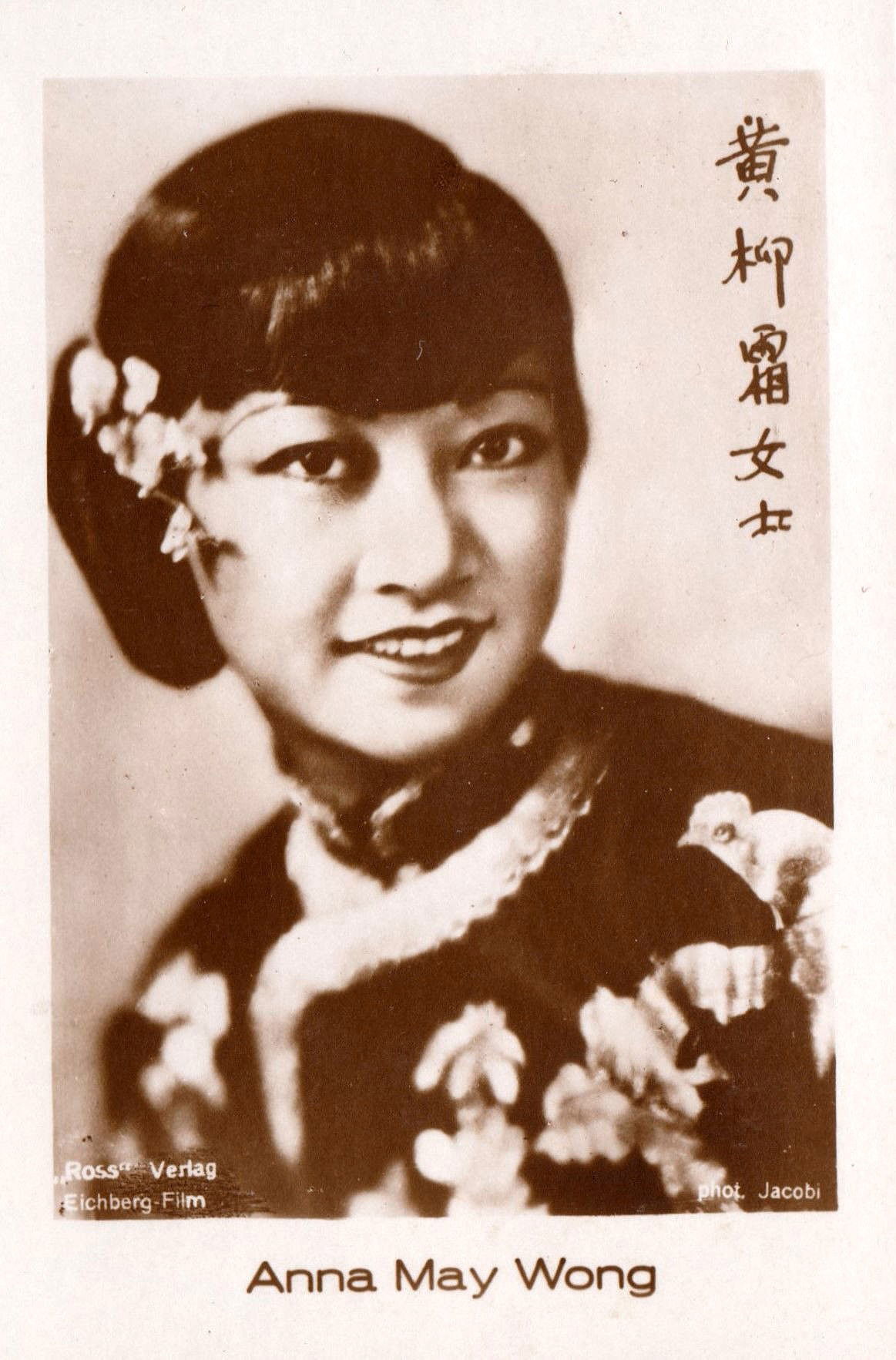
Card posizione 4 PAG. 9 FILM ARTISTS FROM AROUND THE WORLD
"HÄNSOM"
(personal collection)

While these cards can be seen as relics of a bygone era, they continue to provide critical insights into how images and advertising shape popular culture and social identity. Wong's story, as well as his representation on cigarette cards, remains a powerful reminder of the importance of fair and respectful representation in all media.

Unnumbered card position 11 of the ֍ CINEMA STARS series printed by ROTHMANS in 1939
(personal collection)
MOVIES
PLAY FILM ▶
"The Toll of the Sea" is a 1922 American silent drama film directed by Chester M. Franklin and produced by the Technicolor Motion Picture Corporation. The film features Anna May Wong in her first leading role. The plot is a variation of the story of Madama Butterfly, set in China instead of Japan.
In 1919, a young Chinese woman named Lotus Flower finds an American man, Allen Carver, unconscious on the beach. She helps the man, and the two fall in love, marrying "the Chinese way". Carver promises to take her with him when he returns to the United States. However, Carver's friends discourage him from keeping his promise, and he returns to America alone.
Lotus Flower gives birth to a son, whom he names Allen after his father. When the older Allen finally returns to China, Lotus Flower is initially happy. However, he is accompanied by his American wife, Elsie. Allen told Elsie about Lotus Flower, and she persuaded him to reveal the true situation to Lotus Flower. When the boy is taken to see his father, Lotus Flower pretends that he is the son of his American neighbors. Later, however, he confides the truth to Elsie and asks her to take the boy to America. He tells the child that Elsie is his real mother. After Elsie takes the boy with her, Lotus Flower says, "Oh, sea, now that life is emptied, I'm coming to pay my great debt to you." The sun sets over the sea, and you can guess that Lotus Flower has drowned.



